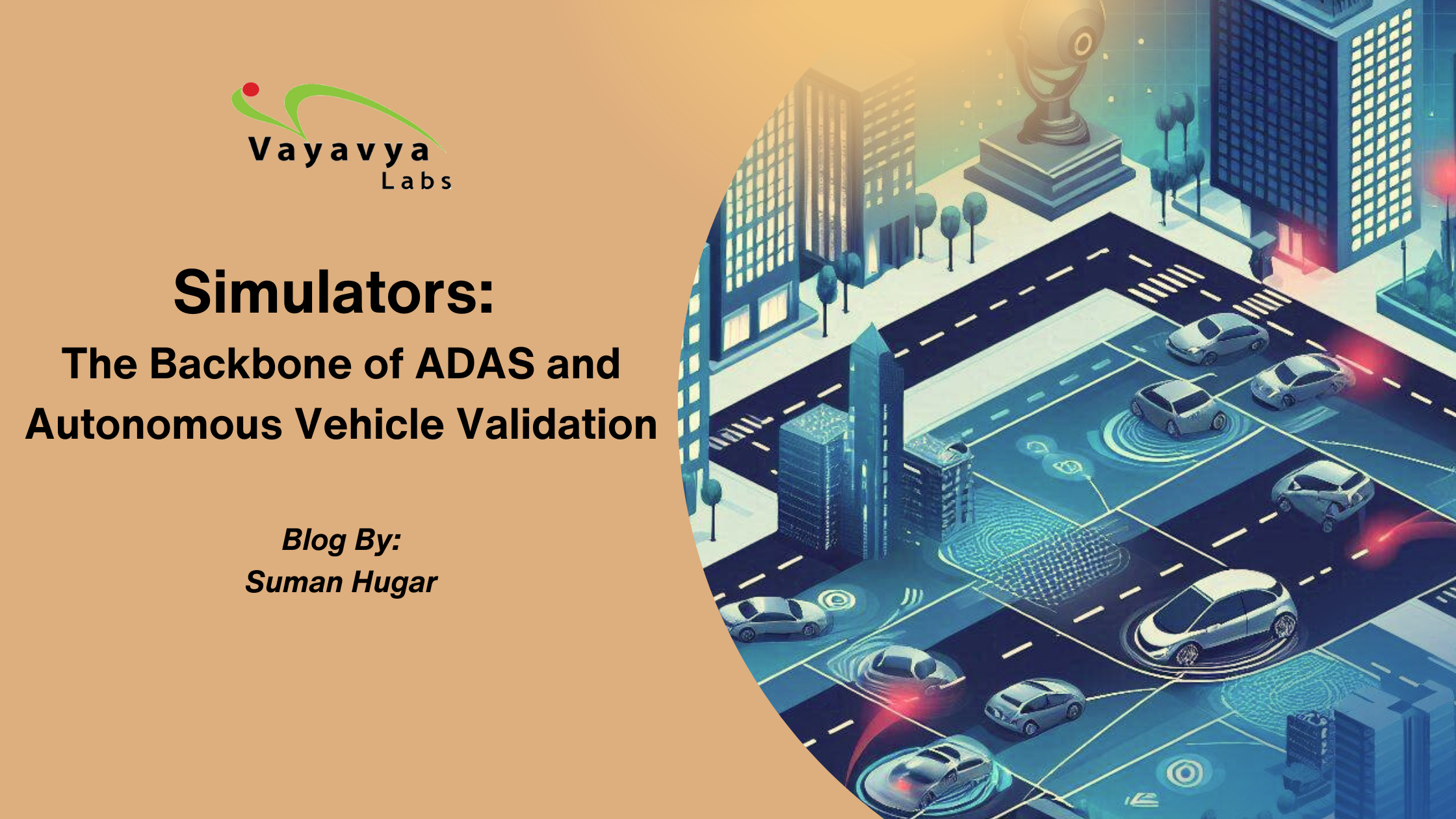Introduction
The Role of Simulators in ADAS and AV Validation
1. Safe Testing Environment
Key Benefits:
- Risk-Free Testing:Engineers can create and evaluate dangerous scenarios—such as sudden obstacles or extreme weather conditions—without endangering real drivers, passengers, or other road users.
- Controlled Conditions: By eliminating external variables, simulators ensure precise testing, allowing developers to focus on system performance and safety.
- Reproducibility: Simulators enable consistent execution of the same scenario, crucial for verifying the robustness of ADAS and AV systems under varying conditions.
Example:
Testing a vehicle’s collision avoidance system in a simulator allows for the safe recreation of sudden pedestrian crossings or unexpected road hazards as shown in Figure 1. This enables engineers to evaluate system responses without real-world risks, providing immediate feedback for rapid refinement.
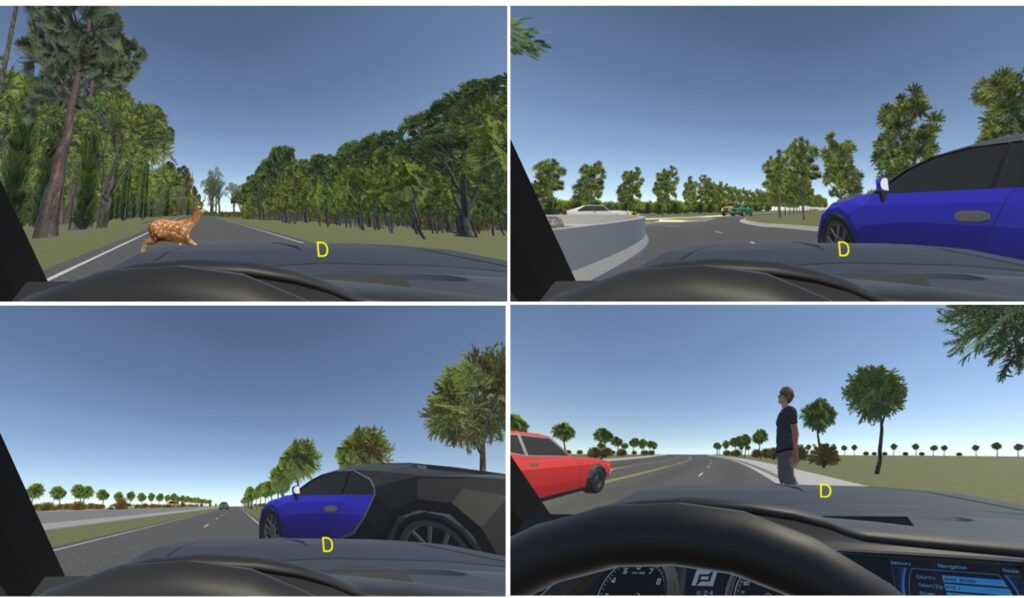
2. Cost-Effectiveness
The Need for Cost-Effectiveness: Physical testing of ADAS and AV systems involves significant costs related to prototype construction, track usage, and operational expenses. Simulators provide an alternative that reduces these costs while still allowing comprehensive testing.
Key Benefits:
- Virtual Scenario Replication: Simulators can model a wide range of traffic scenarios, from merging onto busy highways to navigating dense urban environments, without the need for physical test tracks or multiple vehicles.
- Reduced Prototype Requirements: Developers can test and refine systems using virtual models, reducing the need for multiple physical prototypes and reducing material and production costs.
- Efficient Resource Utilization: Simulators allow testing numerous scenarios within a single virtual environment, optimizing resource use and reducing overall expenses.
Example:
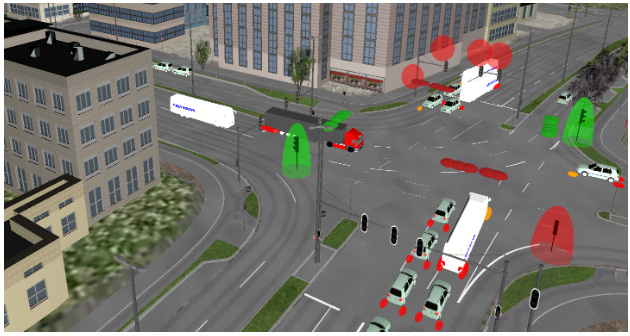
3. Rapid Iteration and Development
The Need for Rapid Iteration: Developing ADAS and AV systems involves complex algorithms and hardware interactions. Traditional testing methods can be time-consuming and labor-intensive, often requiring physical prototypes and real-world trials.
Simulators address these challenges by offering a dynamic environment where developers can quickly test and refine their systems.
Key Benefits:
- Instant Feedback: Real-time testing provides immediate feedback, allowing developers to observe system performance and make swift adjustments.
- Efficient Algorithm Tuning: Developers can rapidly modify algorithms and retest them if a simulator reveals performance issues, accelerating the refinement process.
- Scenario Flexibility: Simulators can recreate a wide range of virtual scenarios, enabling comprehensive testing without physical constraints.
Example:

4. Comprehensive Scenario Testing
Key Benefits:
- Wide Range of Scenarios: Simulators can model numerous driving situations, enabling extensive testing without physical limitations.
- Adaptability Testing: Simulators recreate extreme conditions to assess how well ADAS and AV systems adapt to unexpected challenges.
- Real-Time Feedback: Immediate feedback allows developers to analyze system performance across different scenarios and make necessary adjustments.
Example:

5. Enhanced Data Collection
Key Benefits:
- Real-Time Metrics Tracking: Simulators record performance metrics like vehicle speed, braking distance, and sensor accuracy, offering a comprehensive view of system behavior.
- Performance Analysis: Engineers can analyze data to identify weaknesses and assess the effectiveness of algorithms.
- Informed Improvements: Detailed data allows for precise adjustments and optimizations, improving overall system performance.
Example:
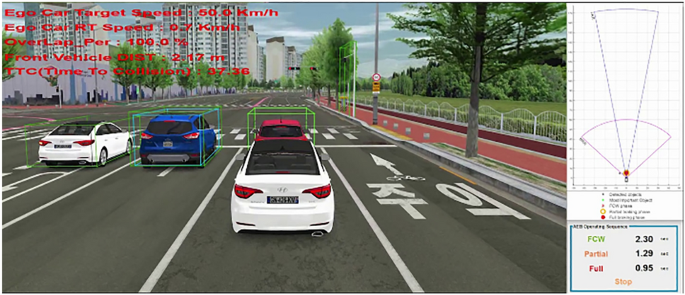
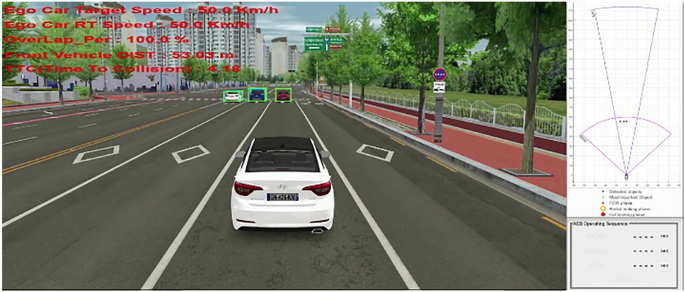
Real-World Applications Across Other Domains
Conclusion
If you’re eager to explore the exciting frontiers of ADAS Validation and Verification and want to learn more about our groundbreaking initiatives reach out to us!
Author


